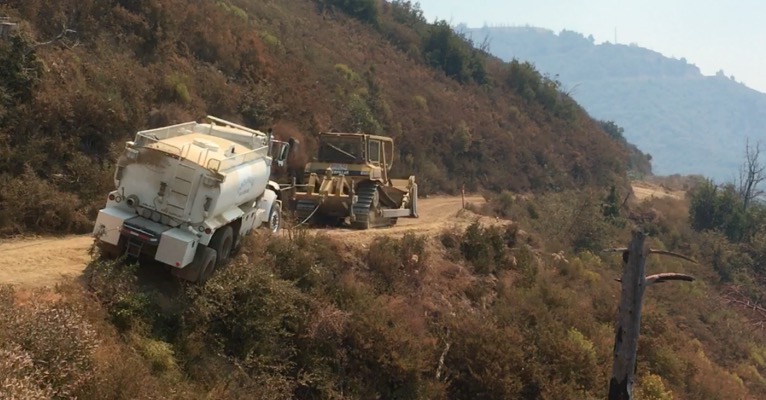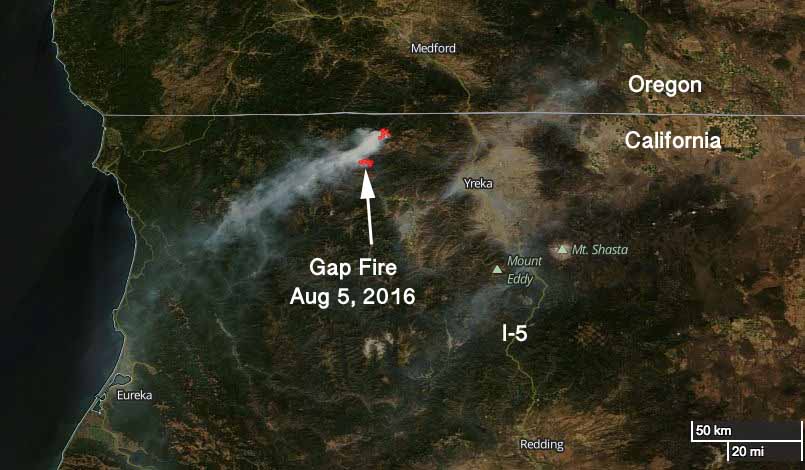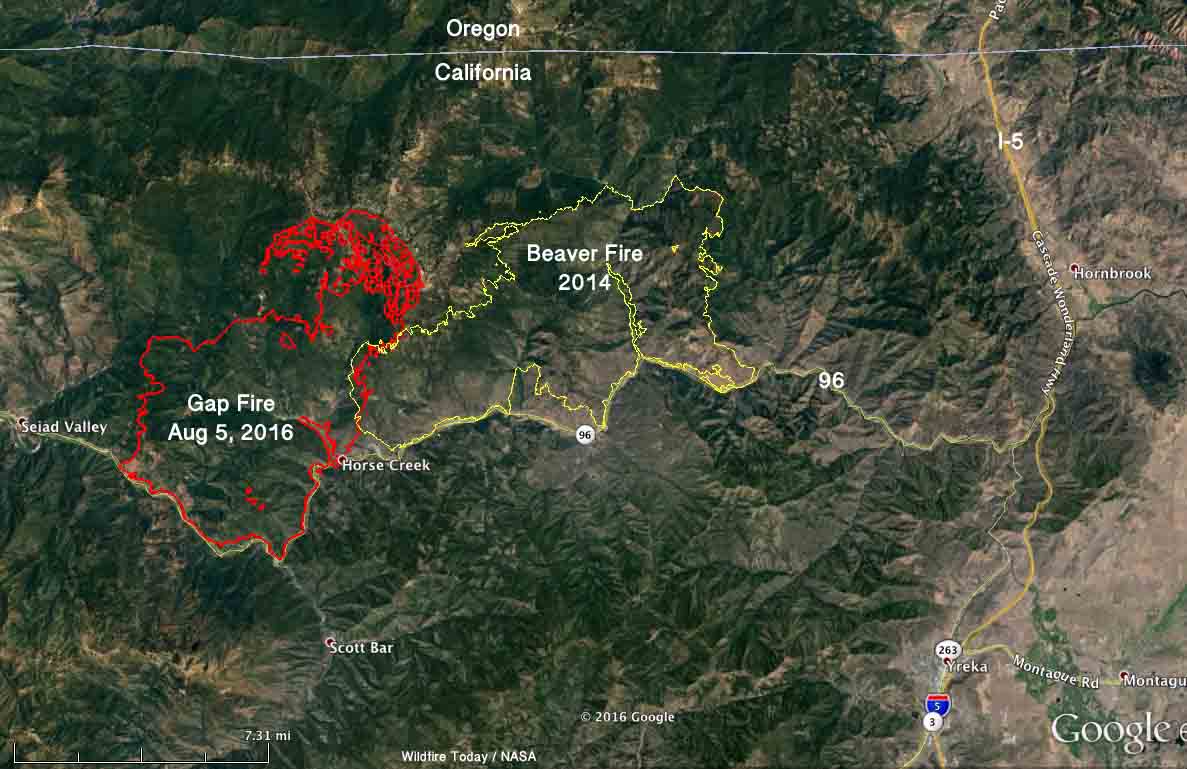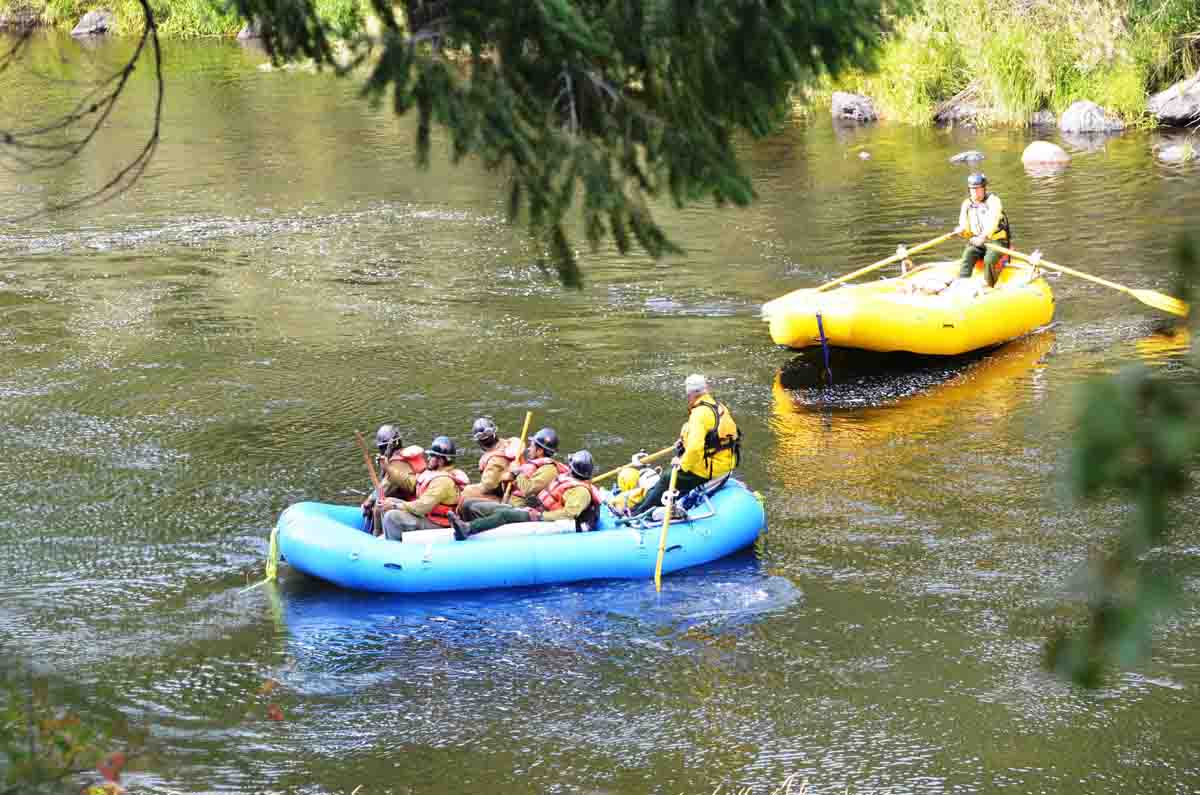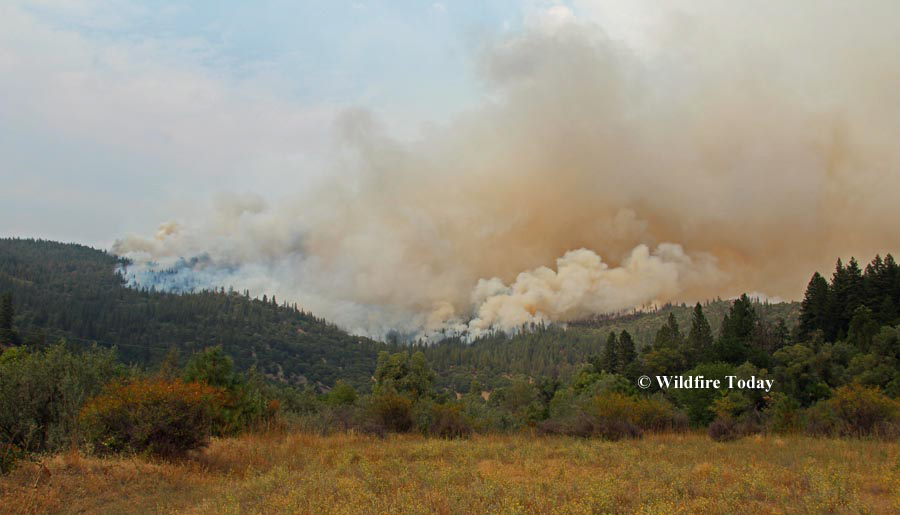Above: Canyon Fire at Vandenberg Air Force Base on the southern California coast, September 18, 2016. Photo by Michael Peterson.
(UPDATED at 12:11 p.m. PDT September 20, 2016)
The Canyon wildfire on Vandenberg Air Force Base on the southern California coast grew by over 5,000 acres on Monday and has now burned 10,542 acres according to officials on the base Monday morning.
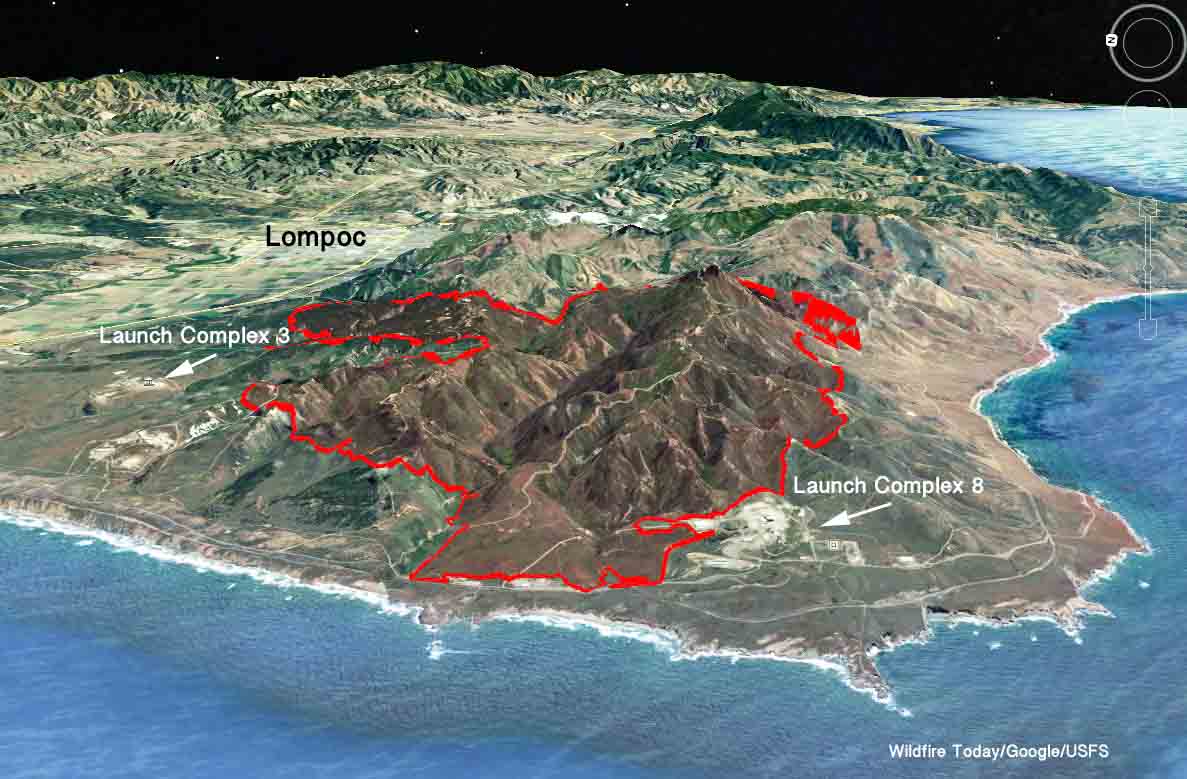
Launch complexes for rockets and liquid oxygen facilities are currently threatened. Evacuations have occurred for some areas on the south side of the base.
SLO County OES engines protecting a liquid oxygen plant at Vandenberg AFB from heavy fire conditions yesterday at the Canyon Incident. pic.twitter.com/bmw7jEKS1X
— SLO City Fire (@SLO_City_Fire) September 20, 2016
The fire has spread to within less than a mile of Space Launch Complex 3 north of the perimeter where the launch of a Saturn V rocket scheduled for September 18 had to be postponed. The fire has also burned very close to Space Launch Complex 8 on the southwest side of the blaze.
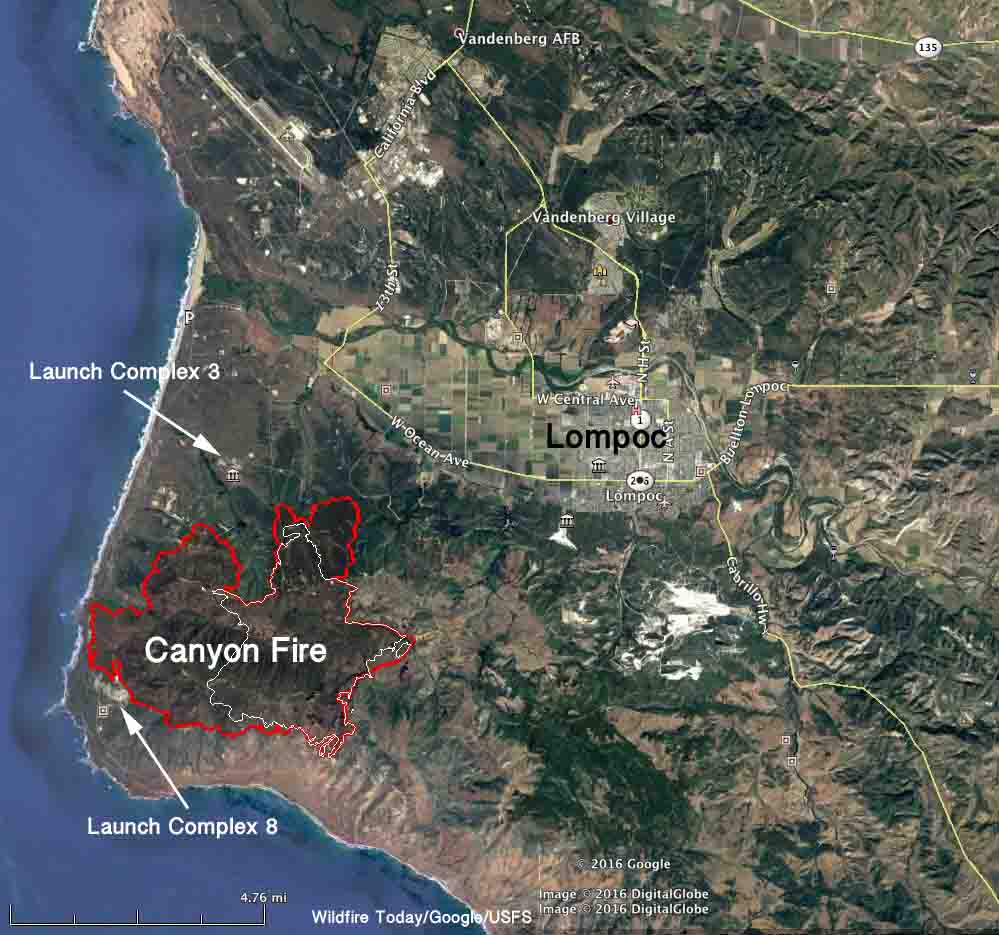
The weather on the fire varies greatly due to the proximity to the Pacific Ocean. Where the fire is burning adjacent to Space Launch Complex 8 it is only a few thousand feet from the coast at 400 feet above sea level. The ridge in the interior of the fire is at 1,500 feet. The relative humidity, wind direction, wind speed, and temperature have been very different along the coast, the interior of the fire, and at Lompoc. The minimum humidity ranged from 12 to 30 percent in these areas on Monday. On the west side of the fire, which was the most active area, the wind was variable but mostly from the south during the day, but switched to come out of the north after 9 p.m.
The photo below illustrates the variable weather in the area. While there is fog and high humidity in a low-lying area, the fire hauls ass just beyond.
The weather is difficult to forecast because of the above issues, but on Tuesday firefighters should expect more favorable conditions, with temperatures around 70, RH of 30 to 60 percent, and west winds at 9 mph.
#CanyonFire Viewed Cojo-Jalama Ranch pic.twitter.com/HnYbdeHfLN
— Daniel Arrellanes (@Greenthumbs333) September 20, 2016
****
(Originally published at 2:20 p.m. PDT September 19, 2016)
A wildfire burning on Vandenberg Air Force Base on the southern California coast delayed the launch of a satellite. As of very early Monday morning the Canyon Fire was approximately a mile from Launch Complex 3, where an Atlas V rocket was scheduled on Sunday to send a WorldView-4 payload into orbit. The satellite will capture high-resolution images of Earth from space.
“Our procedures require stand-by firefighting crews for every launch to ensure safety of our personnel and facility protection,” said Col. Paul Nosek, Emergency Operations Center commander. “We’ve delayed the launch in order to concentrate our resources on the situation at hand.”
No facilities have been damaged by the fire in the remote canyon between Arguello and Santa Ynez Roads.
According to Col. Paul Nosek, no space launch complexes or critical range assets are in immediate danger.
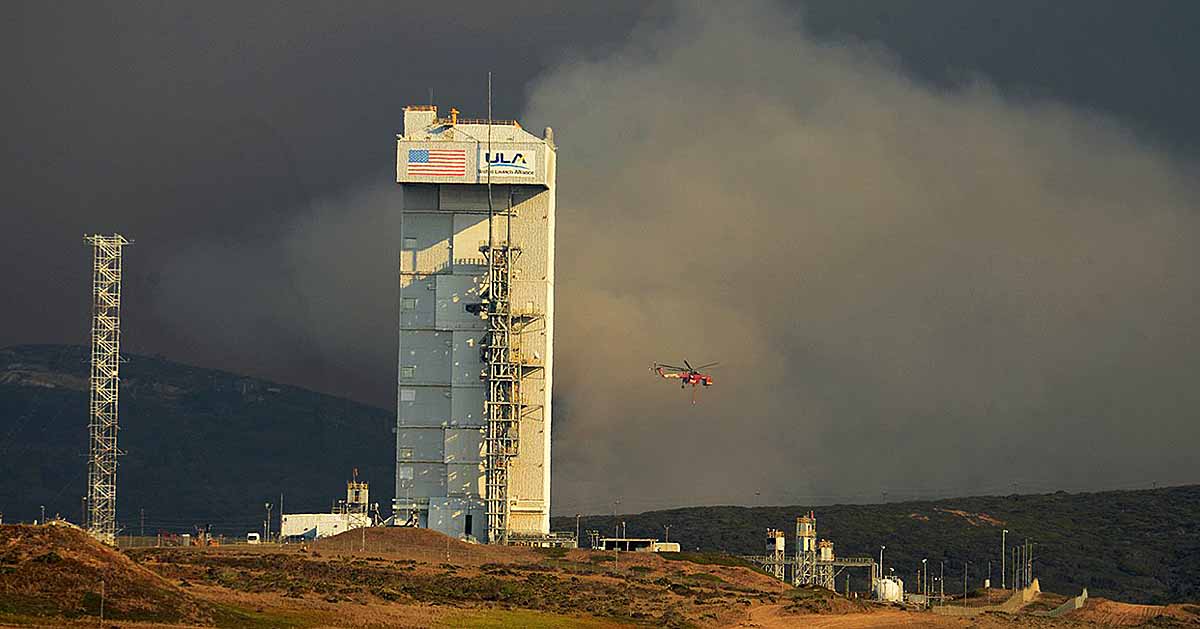
The fire has been burning since September 17. The cause has not been released. Monday morning it was mapped at 4,528 acres. It has caused power outages in several facilities on the south part of the base. Those buildings are currently operating on generator power. The base’s Civil Engineers will sustain the generators until downed electrical lines can be repaired and commercial power is restored to the facilities.
Firefighters are fighting the fire with air tankers, helicopters, dozers from Santa Barbara County Fire, and personnel from federal, state, and local fire agencies. The aircraft are flying out of Santa Maria and Paso Robles airports.
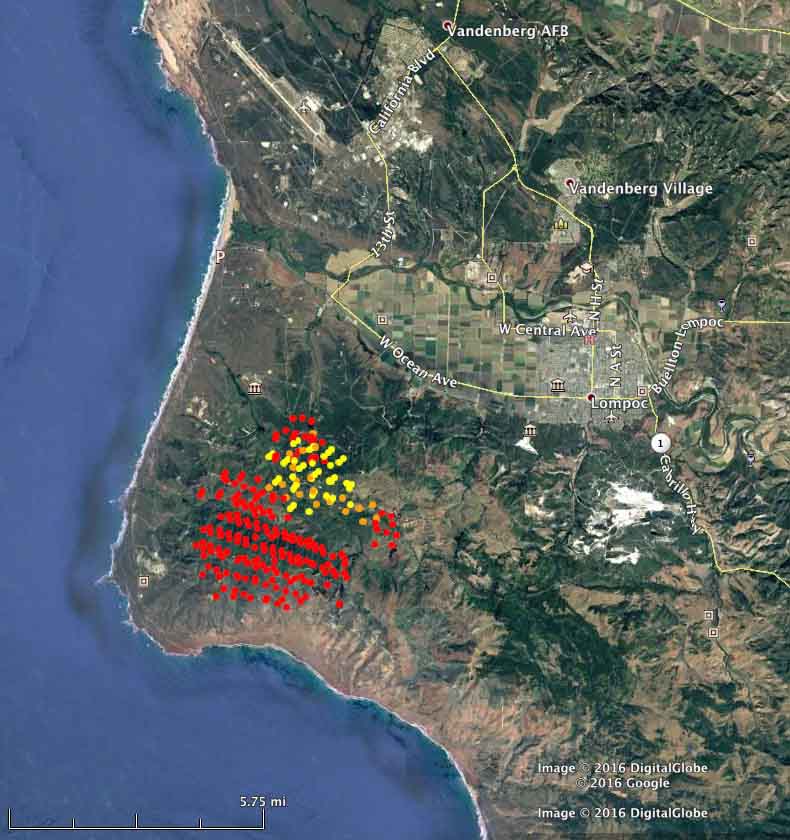
The photos below are courtesy of Santa Barbara County Fire.
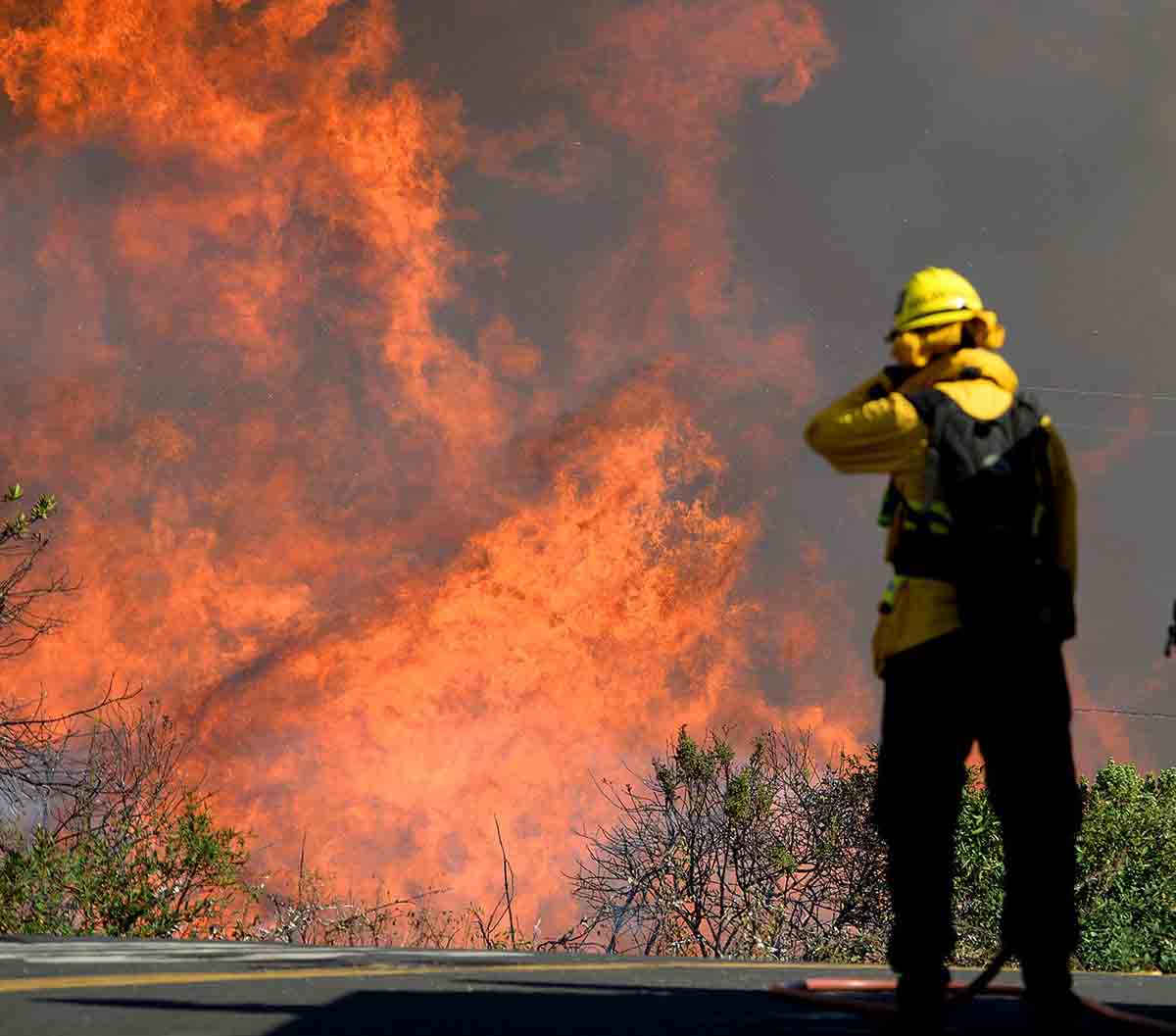
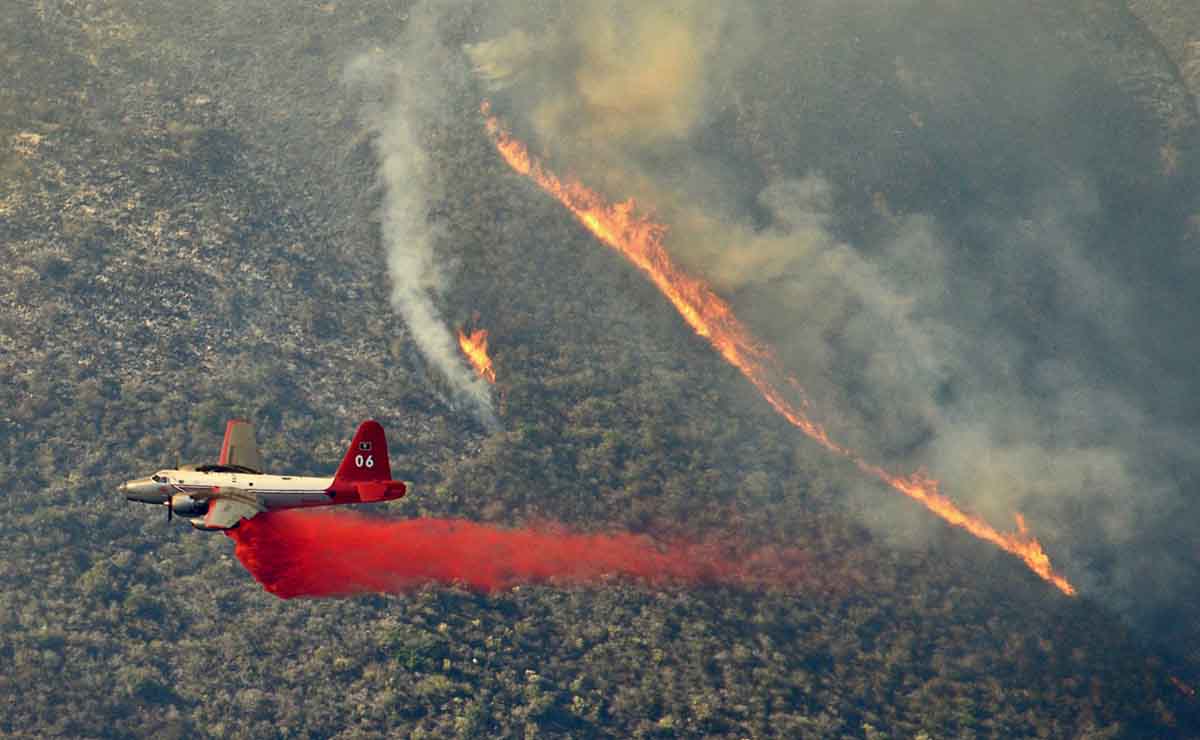
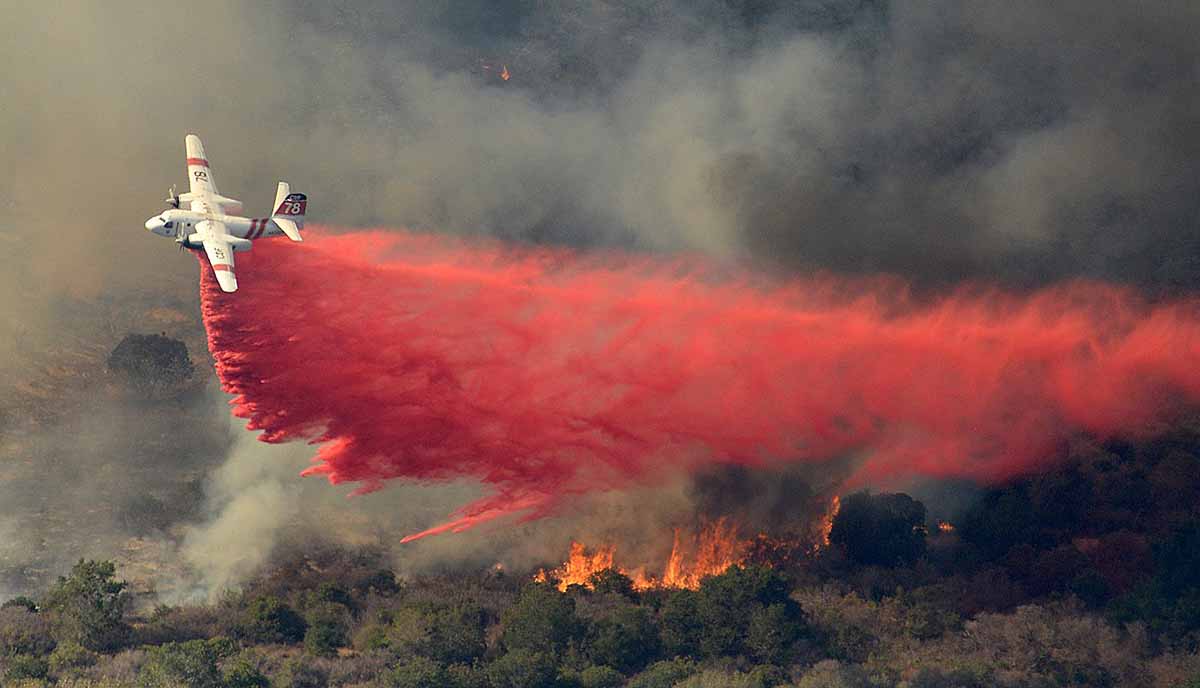
Thanks and a tip of the hat go out to Walt.


